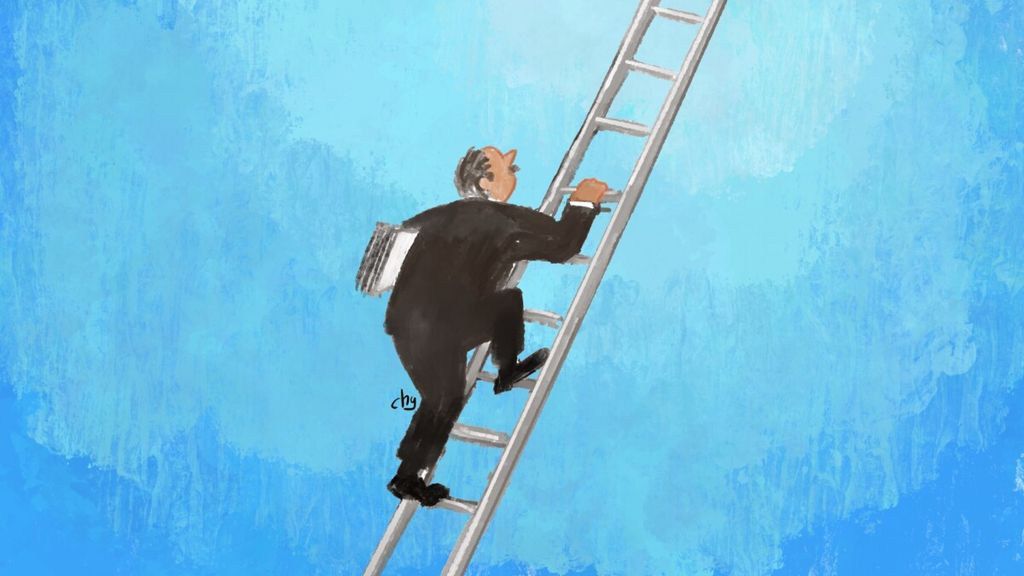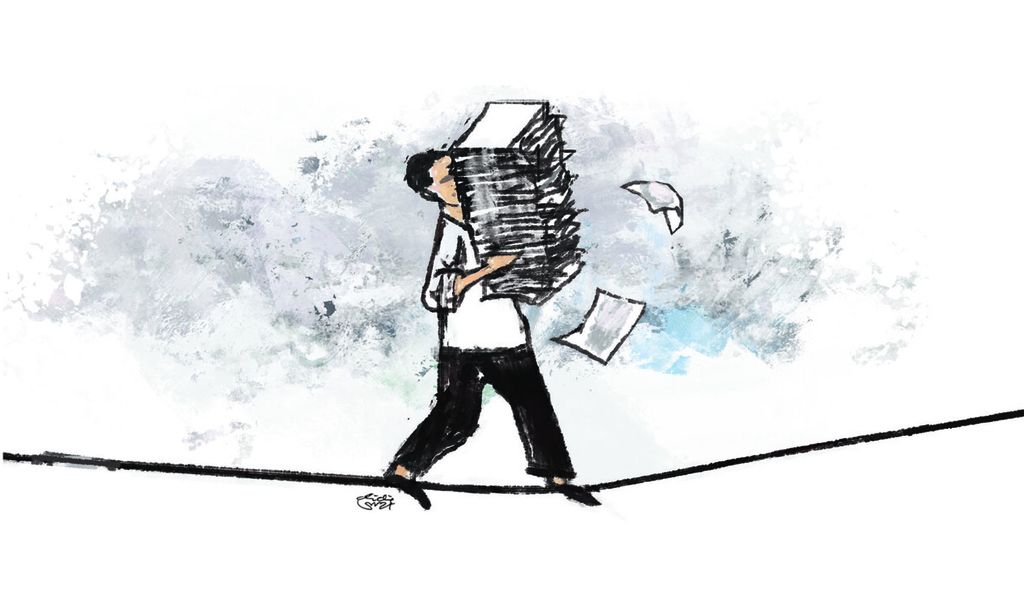Keeping Cautious in Economic Recovery Policies
To continue to support economic growth, relaxation in macroprudential regulations is still very much needed, as well as efficiency in the payment system, the deepening and development of the financial Market.

The Covid-19 pandemic has disrupted life and the global economy for almost two years.
The long journey has been tiring, as its suppresses and undermines people not only physically but also mentally. This struggle has lasted very long, and the pain it causes has been unbearable. Covid-19 has also caused deep sorrow, fear and trauma. The pandemic has affected everyone, regardless of their social and economic status. Covid-19 has destroyed the fabric of human life (social, economic and political) and its destructive power is extraordinary and comprehensive.
The world's policy response has been similarly orchestrated. The point is getting rid of Covid-19 as soon as possible or ensuring it at least does not interfere with our lives to such an extent. The response is quite logical as it mostly focuses on the handling of health and humanity. The economy is no longer the main priority because most countries prefer mobility controls so that the spread of the virus can be controlled and traced. Efforts are needed to break transmission chains.
Fiscal and monetary policies have been directed and mobilized to overcome the costly effects pandemic. The most rational choice is to first solve the main problem, namely Covid-19. If the pandemic can be overcome or controlled, people's physical and social activities will naturally return to normal. The demand for goods and services will automatically increase. If production can grow to meet rising demand, economic growth can gradually return to pre-pandemic levels.
Also read:
> Acceleration through the National Economic Recovery (PEN) 2021 Stimulus
The global recovery has been increasingly uneven. It is interesting to see how the global economic recovery occurred in 2021 after experiencing the 2020 economic recession.
Developed countries are recovering faster than developing countries as poor and underdeveloped countries are getting left further behind. The divergence of the economic recoveries among countries are caused by: (1) the distribution and speed of vaccination, (2) the scale and speed of response to monetary and fiscal policies (especially policy normalization) and (3) the ability to reopen the economy and social activities involving physical contact.
Almost all global growth predictions were revised down as the escalation of the pandemic forced several countries to reimpose lockdown.
In 2021, the world's economic recovery should have been very promising. Economic growth had begun to occur, but, unfortunately, the spread of the Delta variant, which caused a sharp increase in the transmission and death rates, halted the growth trend. As a result, almost all global growth predictions were revised down as the escalation of the pandemic forced several countries to reimpose lockdown.
Furthermore, as the economy began to grow, unexpectedly, the world economy was also hit by high inflation. Most developed and developing countries experienced inflationary pressures. This is certainly not healthy for the overall global economic recovery. Its negative impact is it will encourage the central bank to immediately normalize its monetary policy. Central banks in various countries have been forced to raise their benchmark interest rates faster and higher than initially planned at a time when the economy still needs low interest rates to maintain the economic recovery momentum in 2021, which is expected to continue in 2022.

Actually, there were many positive things in the 2021 economy that could serve as the basis of economic growth in 2022, even though the economy in 2021 was still hampered by a number of shortcomings, particularly uncontrolled inflation, due to the scarcity of raw materials and energy, as well as high shipping costs as a result of the pandemic.
Therefore, it is natural for the world to remain optimistic in welcoming the year 2022. The International Monetary Fund (IMF) and the Organization for Economic Cooperation and Development (OECD) estimate that global economic growth will reach 4.9 percent and 4.5 percent, respectively, in 2022, a slight decline from 5.9 percent (IMF) and 5.7 percent ( OECD) in 2021. The driving forces of the growth of the global economy in 2022 are expected to also include Europe. It previously consisted only of the US and China.
Also read:
> Recession During Pandemic and Economic Recovery
> Getting Out of the Recession
The positive indicators for the world's economic recovery should serve as a good opportunity for the Indonesian economy. The trend of Indonesia's economic recovery in 2021 was promising, as the economic recovery showed a positive trend after experiencing a deep contraction of 5.3 percent in the second quarter of 2020.
Even as of the third quarter of 2021, several economic sectors had exceeded prepandemic levels (2019).
Signs of the strengthening of the national economy emerged amid an increase in domestic demand. Consumer confidence grew, and household consumption also continued to increase, as reflected in the increase in the ratio of consumption expenditure to total consumption to 75.1 percent in the third quarter of 2021, up from 69.4 percent in the third quarter of 2020. The increase in consumption expenditure was apparently supported by an increase in income levels, which continue to show improvement toward prepandemic levels.
More optimistic
It is also quite interesting to note that there has been a change in people's behavior, which was previously full of worry due to the pandemic, toward more optimism in responding to future economic conditions. This can be seen from savings growth, which declined in 2021 compared to 2020. In 2020, people tended to delay their spending and investment because of the uncertainty caused by the pandemic. People’s savings rose sharply from 6.8 percent in January 2020 to 10.1 percent in September 2020. On the other hand, in 2021, people’s spending began to increase, as shown in the savings growth in 2021, which fell from 10.5 percent in January 2021 to 7.8 percent in September 2021. The downward trend is expected to continue in 2022, which will, in turn, push up consumer consumption (food and non-food items).
The stronger demand will also trigger an increase in production activities. Indonesia's Purchasing Manager Index (PMI) has been consistently in an expansionary path in recent months, rising from 52.2 in September 2021 to 53.9 in November 2021. A Bank Indonesia (BI) survey on the performance of medium and large-scale businesses shows that business activities have become more stable since the first quarter of 2021, accompanied by an increase in employment in the manufacturing sector, which has also shown signs of recovery.

According the latest survey conducted by BRI Research Institute, the performance of micro, small and medium-scale enterprises (MSMEs) in the third quarter of 2021 was also very encouraging. They were very optimistic about the economic condition in the fourth quarter of 2021.
The MSMEs’ expectation index reached 132.0 (very optimistic because the index is above 100), far above the previous expectation of 88.1. From the import side, it was apparent from the increase in imports of raw materials and capital goods that the process was in line with the ongoing economic recovery. The growth of imports of raw materials, which was recorded at 11.3 percent in February 2021, increased sharply to 60.5 percent in November 2021. Meanwhile the increase in imports of capital goods, which was recorded at 17.7 percent in February 2021, continued to increase to 23.1 percent in November 2021.
It is therefore quite fitting for us to welcome the 2022 economy with a sense of optimism. The momentum of the recovery must be maintained, but all the efforts to restore the economy should be carried out with caution, and we should not get carried away. This optimism is supported by several factors: (1) the driving forces for the world's economic recovery are the US, China and Europe, (2) vaccination is expanding, (3) domestic demand is recovering, (4) commodity prices remain high and (5) community behavior has become increasingly adaptive in the midst of the pandemic.
Also read:
> Economic Growth toward the End of the Pandemic
However, we should remain alert to the various risks that could hamper the national economy, namely (1) the tapering off of the US Federal Reserve (Fed) quantitative easing program in November 2021 (followed by rising interest rates in 2022), (2) the emergence of a new variant of Covid-19, (3) the divergence of the recovery of the global economy, (4) the potential for BI to raise its benchmark interest rate, (5) the limited fiscal space for stimulus and (6) the opportunity for increased pressure on financial and foreign exchange markets.
With the above factors, I estimate Indonesia's economy will grow 4.8 to 5.3 percent in 2022, higher than in 2021. The inflation rate will rise to 2.8 to 3.3 percent, while the rupiah exchange rate against the US dollar will depreciate slightly to a range between Rp 14,479 and Rp 14,955. Lending growth is projected to reach 5.8 to 7.5 percent in 2022, and the growth in savings (third party funds) in 2020 is expected to decline to 4.8 to 6.5 percent from the level recorded in 2021.
The government's stimulus through the 2022 national economic recovery (PEN) program should be more focused and directed at economic sectors that have high leverage on economic growth and employment. Meanwhile, BI, which is likely to raise its benchmark interest rate to maintain rupiah stability, can maximize nonmonetary policies.

Anton Hendranata
To continue to support economic growth, relaxation in macroprudential regulations is still very much needed, as well as efficiency in the payment system, the deepening and development of the financial market and the acceleration of green financial inclusion. The Financial Services Authority (OJK) can further encourage the transformation of the digital economy and increase the effectiveness of financial inclusion and consumer protection programs.
Anton Hendranata, Chief Economist of Stated-owned Bank Rakyat Indonesia (BRI), Research Director of BRI Research Institute
This article was translated by Hendarsyah Tarmizi